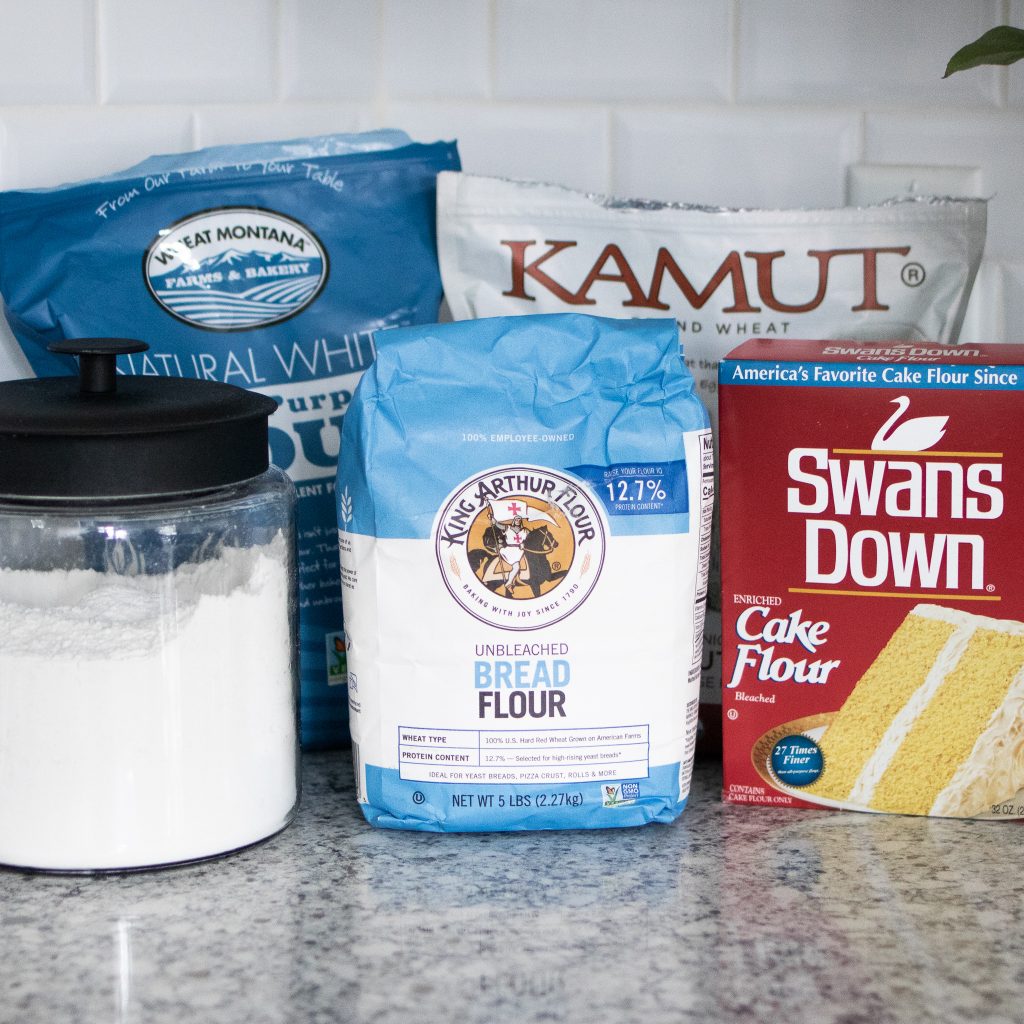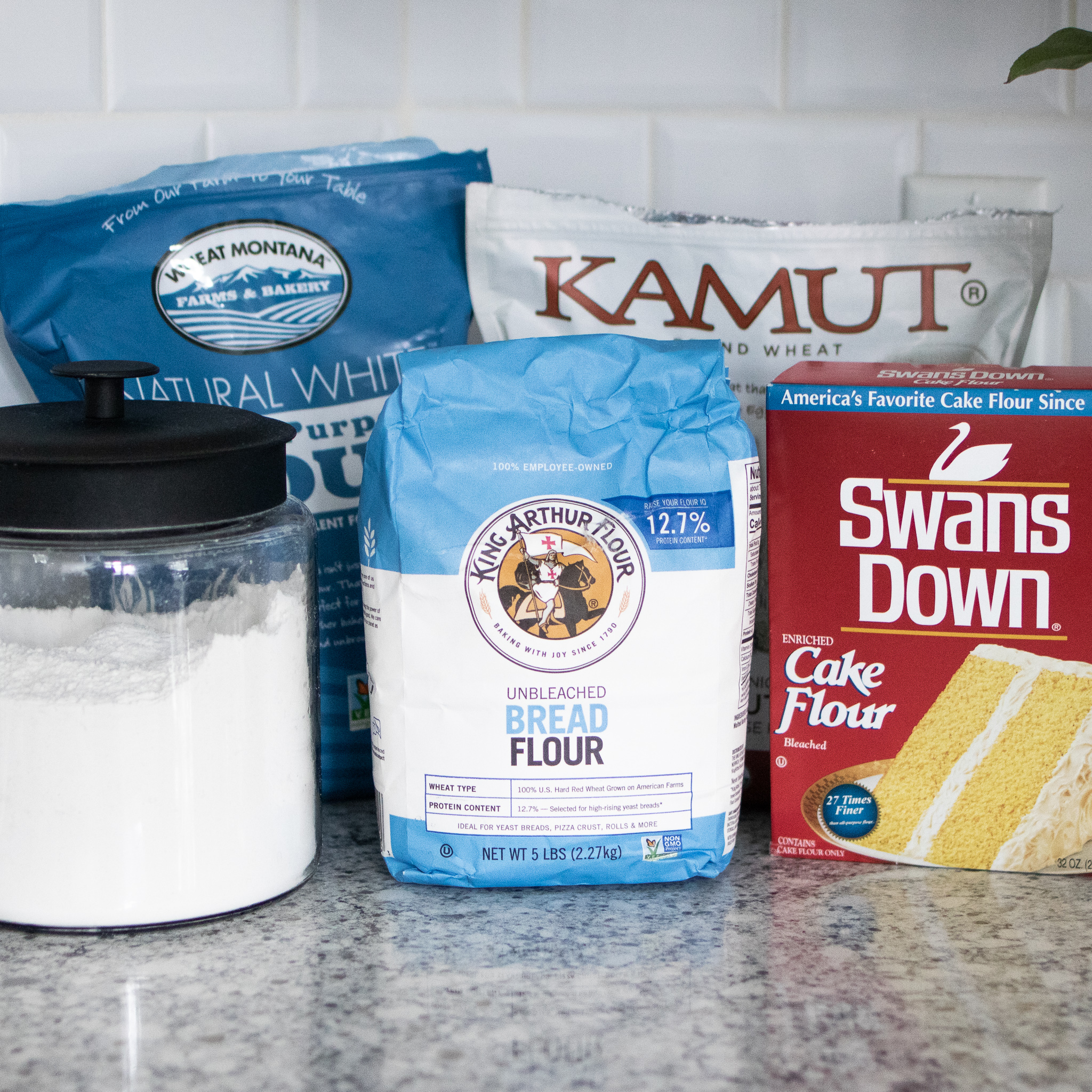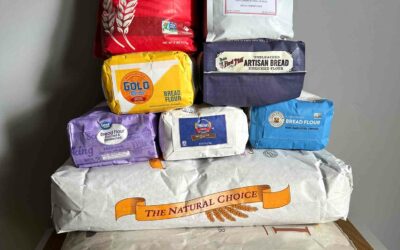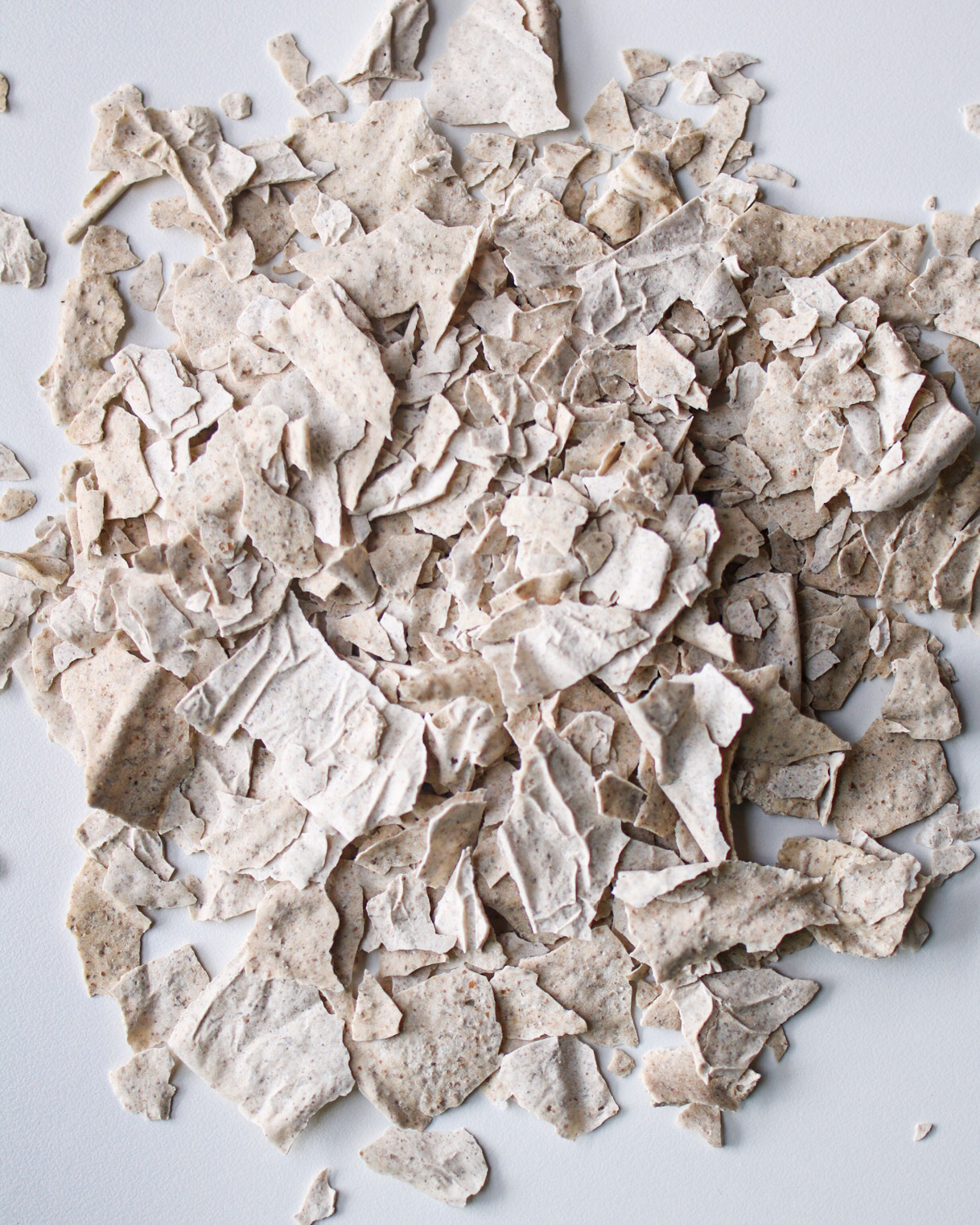A reference post on the types of flour, the differences between certain flours, and my favorite ways to store flour.

How is flour made?
If we understand really WHAT flour is and how it’s made, it makes understanding the differences between all of the flours out there much easier.
Our classic flours are made from wheat. The part of the wheat, the kind of the wheat, and how it’s processed all determines WHAT type of flour it is.
PARTS: There are 3 parts to a wheat kernel: the germ (embryo), the bran (kernel shell), and the endosperm. The endosperm is the portion that is used for light flours like all purpose flour, cake flour, etc. Because it’s using just the outer layer, it’s lower in protein and fiber, making the flour light and fine – which we love in our baked goods because it’s what gives it that texture and lift. Millers can take the endosperm and break it down into different strains to separate it by different levels of protein content and give us a variety of flour types to work with.
Whole wheat flour uses the entire wheat kernel – making it higher in protein and fiber. It also means we get all of the vitamins from the entire part of the kernel.
KIND: There are several different kinds of wheat berries that are grown. The primary types are hard white wheat, hard red white, soft wheat, and durum wheat.
PROCESSED: Bleach helps “age” the flour which is a helpful aspect in baking because gluten and protein increase.

What is gluten?
The scientific makeup of flour causes a chemical reaction when combined with water. A key element in flour is the amount of protein. These proteins then create a structure called gluten. The amount of protein determines how “strong” this gluten structure is, which effects the rise and texture of the baked good. The more protein present, the stronger the gluten structure. Gluten is not an ingredient, but a scientific structure made up of proteins.
One case this isn’t true is in whole wheat. Because whole wheat is using the WHOLE kernel, the outside bran actually causes the gluten structure to break down, making whole wheat baked goods prevalent to being dense or heavy.
What flour is best?
A variety of different flours have been created to help meet specific goals in baking. As I described above, the amount of protein in the flour determines the crumb structure, texture, and rise of the baked good. So mills process the grains, analyze them, and create different combinations which gives us several different options to pick at the store.
But it can be overwhelming, right? Are you expected to have 15 different flours in your cupboard?? Well, maybe. But if you’re asking me, I usually suggest otherwise. Most home bakers and get by with carrying just a few primary types, depending on what you love to bake. Yes, there are flour substitutes, and while those are better than nothing, countless baking tests out there have proven that there IS still a difference! It’s not a perfect substitute.
Here’s a handy chart for your reference to help guide you in knowing what flour works for your kitchen.

What is Kamut flour?
Another common question I get is specifically about Kamut flour. What is it? Is it worth the extra cost?
Kamut is originally an Egyptian grain. It’s special because unlike the standard wheat we use today that has been slowly modified by farmers over time, this grain has not been modified at all! It’s under very strict growing standards that are favorable to those cautious about how their food is being grown and processed.
I’ve known people who say they have minor sensitivities to typical baked goods, but don’t have those issues when Kamut is used. I find that very interesting!
It also has a delicious buttery taste. You can find it in an all purpose flour and the grain. Because it’s under strict growing regulations and is not as commonly grown, it does come with a higher price tag. I love using Kamut in our home, and I pick and choose what I use it for. I like to use it in my Sandwich Bread recipe, in pancakes, or other things I’m intentionally trying to be healthful with. When I make a mass batch of cookies or something I’m not being intentional about with my health, I use all purpose flour.
Best way to store flour?
How long does flour last? What’s the best way to store flour?
Flour is a raw ingredient that is prevalent to bacteria, which is why you should never eat it raw, AND which means it has a pretty short shelf life when not stored properly. Your typically opened bag of all purpose flour on the shelf is fresh for about 8 months (or 1 year + in the freezer). Whole wheat is fresh at room temperature for 6 months (or 1 year + in the freezer). Finally, wheat berries are fresh for 6-12 months stored normally at room temperature.
I use standard buckets (like these or these OXO ones) to keep in our pantry, but I refill those from a better source of storage. I LOVE these white food grade buckets. The easy twist on gamma lids are a must. These thick food grade buckets help protect it from bugs, temperature, and light, which increases the shelf life to about 10 years. I still suggest you store these buckets in a cool dry place.
You can use other long term storage options such as bucket linings, vacuum sealing, and oxygen absorbers to increase grain storage up to 30 years. Make sure you try to store those in a cool dry place as well. This crazy pandemic I think was a wake up call to all of us to make sure we have enough flour on hand. Hopefully those tips help!
DID YOU MAKE THIS RECIPE?
Tag @loskitchenco on Instagram and
hashtag it #loskitchenco






